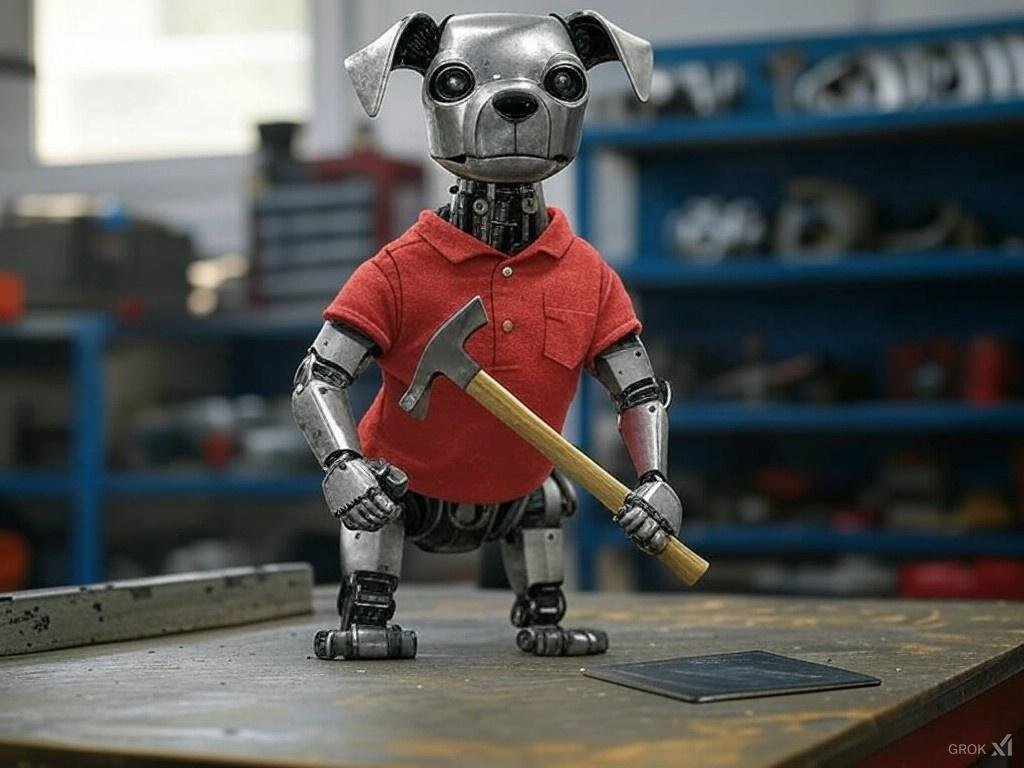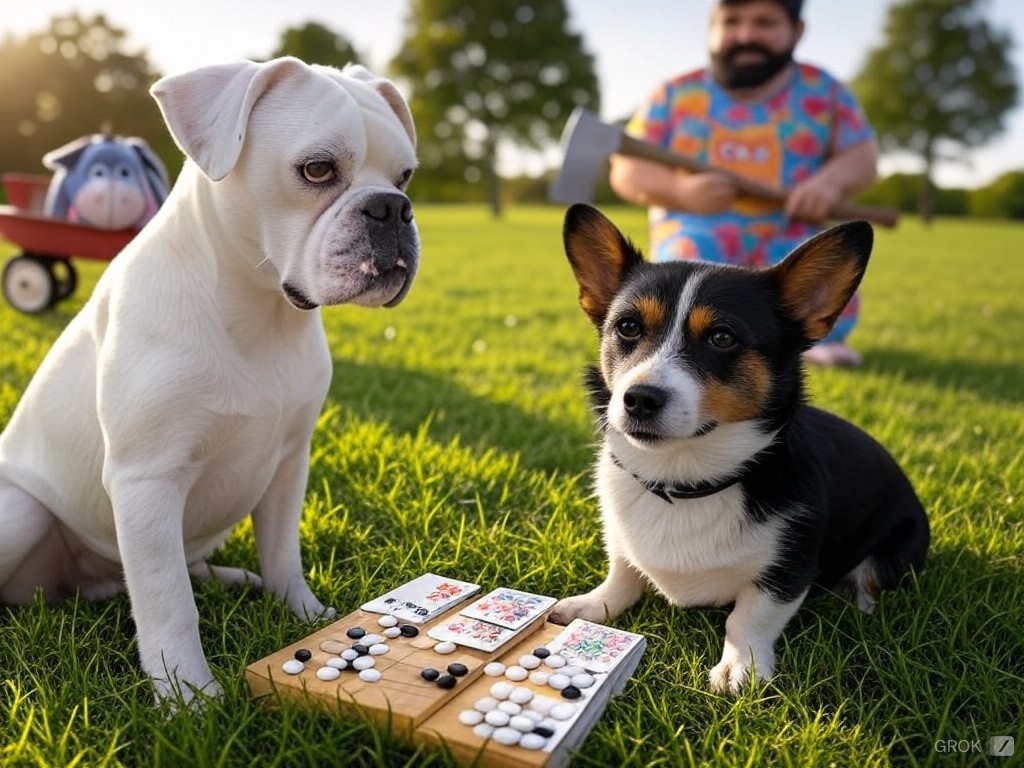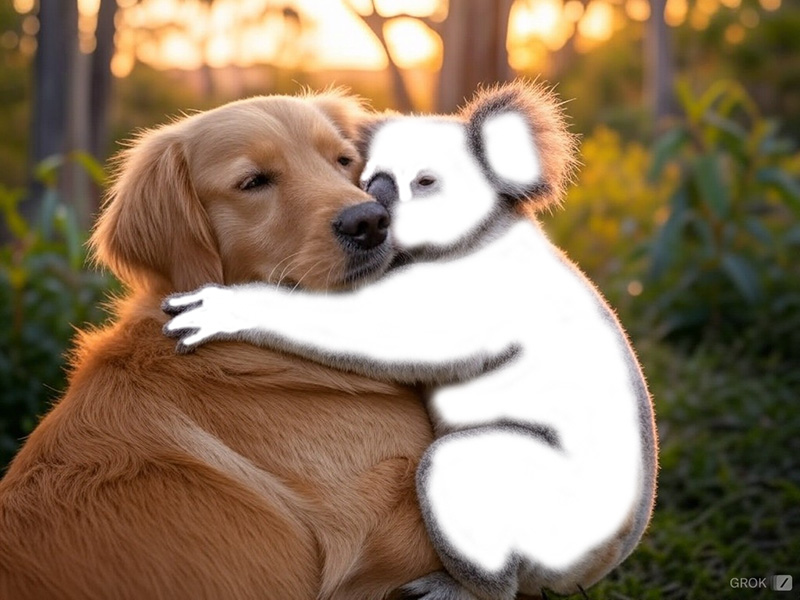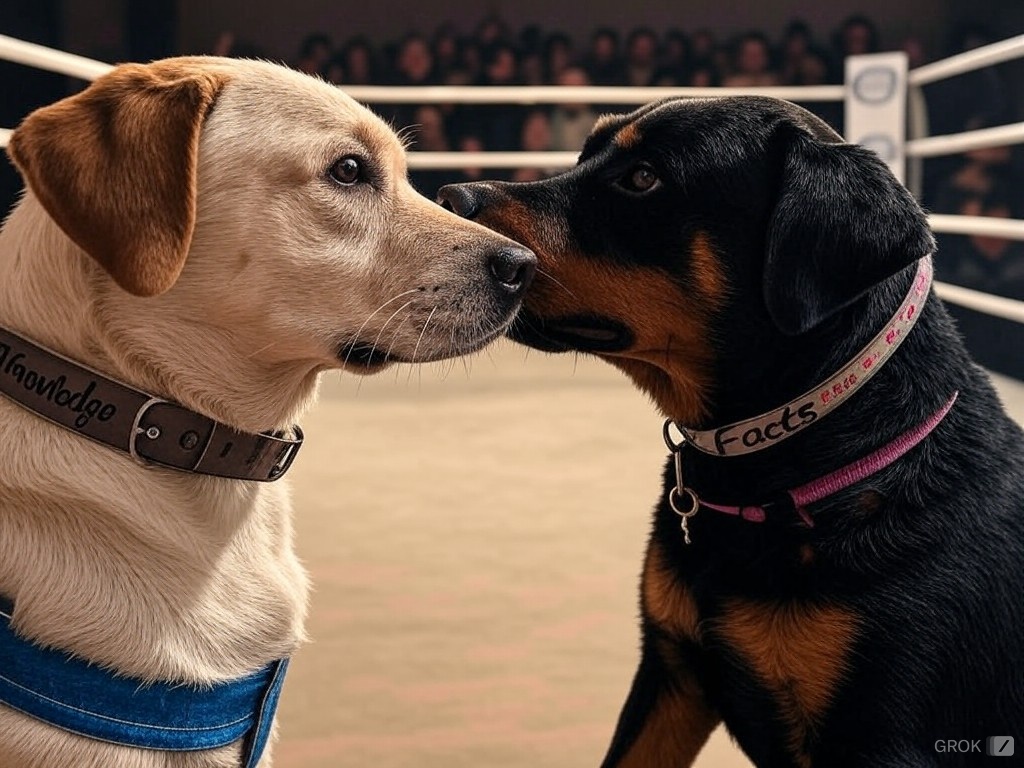I’m sorry the robot dog isn’t wearing pants. I told Grok I needed a robot dog wearing a DIY (“Do It Yourself”) shirt. It gave me exactly what I asked for. That’s how the image creation models work. The picture passed all the classifiers I specified. It didn’t think to ask me if the dog should be wearing pants, mostly because these systems do not think. But we have a tradition of cartoony characters who do this, from Winnie the Pooh to Donald Duck to Whacko Warner. Thankfully humans have retained some modesty.
If I still paid my human illustrator to make goofy pictures for my essays, he would have drawn the robot dog with pants. If not, I would have sent the picture back to him and asked for pants. With Grok, I haven’t figured out how to get it to make a change to a generated picture. Currently, I can only ask it to draw a new picture with a refined prompt. Grok gave me the ability to do it myself, so I have to work within it’s limitations if I’m going to do it myself. I most certainly could never draw even a terrible DIY Dog Robot.
Managers Want to DIY
My introduction to ChatGPT came about two years ago, when a new co-worker, ostensibly brought in to manage our small firm’s chaotic workflow, used his GED (“General Educational Development”) diploma equivalent from the Australian Outback to tell the team that AI would replace us in 6 months if we didn’t figure out how it could help us. I know that is a shared experience for many software and creative professionals.
The great industries through history have sought to leverage the work of human beings. Small teams proved ideal for Skunk Works type projects, but the goal of all heads of companies for almost 150 years of industrialization has been to grow a workforce in order to grow a business. Technology has chipped away at that attitude. For the 40 years of the personal computer era, jobs that could be computerized have been automated and outsourced. There were still people doing work, they were just elsewhere. Downsizing a workforce has been seen as a sign of failure, and has usually been difficult to recover from. Even today, firms try to hide downsizing with return to office mandates, patterned on what Marissa Mayer did at Yahoo! 12 years ago now. “We have to cut our payroll,” the C-suite people discuss grimly in their C-suite meetings, “Let’s try to do it without drawing undue attention.”
It wasn’t until ChatGPT would offer a confident answer to any question asked that managers began to think they didn’t need their workers or cheaper replacements. They could do the work themselves. At a minimum, this gave them immediate bargaining power and a heavy upper hand. Instantly, there was no shortage of people willing to hype up the potential of the technology to do any job. And no shortage of managers willing to lap up, amplify, and even act on the hype.
Prior to ChatGPT, most managers had no hope of doing the work themselves. Few had knowledge of the work. Few firms put competent workers — developers, artists, analysts, etc. — in management. ChatGPT gave them hope. It was obviously misplaced to anyone familiar with the actual work.
Leaders Need People Working for Them
I’m no Barbra Streisand fan, but her lyric — People who need people are the loveliest people — offers insight into our situation. In the great tradition of industry as noted above, managers who don’t need people (to manage) are garbage managers. Expensive failures of so many AI initiatives are beginning to shine disinfecting light on these garbage people.
Notice that I have not called these managers “leaders” yet. Because they are not leaders. A recent mentor of mine, a very successful entertainment industry talent manager, repeatedly emphasizes that the number one task of a leader is to provide safety. That is invariant whether you are an in charge at the top of an org chart, or leading an initiative involving co-workers, customers, suppliers, etc. People look to you as a leader for safety. When you provide that, work can get done.
You might see how a new manager with a GED from the Outback threatening the team’s livelihood didn’t instill a sense of safety. Dude was no leader, and did not move the leadership dynamic on that team a metric half inch. Nor was he or could he be any help actually doing the work, so we couldn’t even repurpose him for that. I can’t imagine how badly things would have gone had he been forced to do the work himself, as he seemed so eager to do.
What Could Possibly Go Wrong?
Avid DIY-ers reading this have war stories a metric marathon long of things that have gone wrong on their way to becoming kind of good at DIY. I’ll share some.
In the early 2000s, I decided to remodel a bathroom. Although the property was a cookie cutter California condo built in the late 1980s, I wanted to spare no expense and no effort. I got a bid for $10K to not quite do what I wanted in about a month. I decided to do it myself. I tore the bathroom down to studs, moved plumbing, did back-breaking shower and tile work, etc. I ended up spending more than a year plus $25K on tools, trial and error, materials, and some professional electrical and plumbing assistance/oversight to get less of what I wanted. That tile saw was sick, and I learned to use it like an artist, not just a skilled craftsman.
About 15 years ago, my Dad was using a screwdriver to try to repair something he should have and could have hired a handyman to repair. My Dad doesn’t have a lot of patience with tools, or a lot of things for that matter. I know he’s my Dad because every bit of patience I have was self-taught, painfully. Neither of us have that gene. While prying at something, the screwdriver slipped and he shoved it through his hand. He needed surgery to repair the damage and extensive occupational therapy to get most of its function back.
I made a new friend in April, 2024. He was successful with his business, and we were looking at generative AI angles that were actually intellectually sound. He did a lot of things himself to build his business and his wealth. He owned a few properties and had to do some cleanup at one this summer. There was a wasp nest in the yard that he needed to get rid of. Instead of calling a beekeeper, he did it himself. He was attacked, and died in the hospital a month later.
So to lawyers, software developers, artists, musicians, and other professionals who have been told for two years that their jobs would be replaced by AI, you should find immediate comfort in knowing that AI is just DIY. There is a tremendous amount that can go wrong, because this AI is just making up answers one metric word (“token”) at a time. It often offers very wrong answers, with the confidence of the most accomplished professional. It makes stuff up, which is great for real generative tasks, but not so great for important decisions.
AI / DIY is great for tasks you would not pay a person to do, where correctness to specification isn’t terribly important. I hope you realized I was joking about paying an illustrator for my essay art before Grok became free to use on X. Grok can’t give me a layered .psd file I can open and adjust with Photoshop, like a human artist would. Without Grok, I’d mashup my own photos with Photoshop to make sillier meme pictures.
AI / DIY is also great for some repetitive generative work. Literacy is an unsolved problem. Most kids, even those from well-off families, don’t have a variety of relevant reading material, especially for younger readers, available at home. I help parents create a new story every day in five minutes, that they can print and read with their kids. The stories are about people, places, and characters their kids know and care about — relevant stories that will delight young readers. No professional, recognized children’s book author can write such at that pace.
AI / DIY is not great for activities that can drain your bank account, impale you, kill you, land you in jail, attract unwanted attention, etc. People are, and they will remain, the more prudent choice for most existing intellectual tasks for decades to come.
The Moral of this Story
It took two years for me to figure out that the AI hype crowd who was and remains excited about replacing skilled workers don’t operate with evil intent — mostly. They are intrigued by the personal empowerment of doing tasks themselves to their own specifications. They used to have to pay for this work to be done and accept the costs of other people doing them other people’s ways. Or perhaps not do the work at all, because it was not worth paying for.
I hope that this essay helps you appreciate that there are benefits to AI / DIY, and potentially unfathomable costs. That’s a healthy mindset for approaching this technology.









